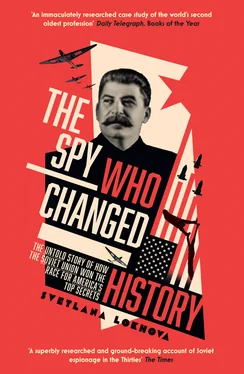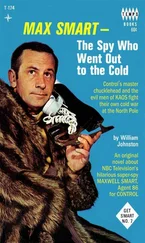As the foreign intelligence arm of the NKVD, INO was in 1930 tiny and poorly funded by the modern standards of espionage agencies. It deployed only ninety-four agents abroad to cover vast areas of responsibility and geography. The proposed addition of seventy-five new intelligence assets in the United States, working for up to three years, was a massive coup. 16It was the largest and most expensive operation ever attempted by INO and required close cooperation with Military Intelligence, called at the time the Fourth Department of the Red Army. The members of the NKVD’s American desk in Moscow Centre – the name given to the headquarters of the Foreign Intelligence department – that directed the highly successful campaign in the USA all sat in a small room and were perhaps at most five strong. 17It was a small team to take on the FBI. Artuzov, by 1931 the head of INO, was the architect of some of the greatest Soviet intelligence coups. He was responsible for the capture and execution of ‘Ace of Spies’ Sidney Reilly in the elaborate ‘Trust’ sting, fn5one of the greatest counter-intelligence operations of all time, earning a deservedly prominent place in espionage history. Artuzov was also responsible for setting in train the recruitment as agents of Communist students at universities across Europe who later in their careers might hold significant positions of influence in their governments. The programme’s best-known products were the Cambridge Five.
It was the prickly aircraft designer Andrey Tupolev who insisted on the recruitment of Shumovsky for intelligence work. Since 1925 INO had been tasked with gathering S&T on top of political intelligence. There was a significant overlap with the work of Military Intelligence. Under the Five-Year Plan, the demand for S&T ramped up, creating the need for a fresh approach. A new type of intelligence officer with a unique set of skills was required. Besides the ability to speak languages and operate in a foreign country, this new breed of spies had to be at the top of their field in their chosen technical specialisation. Tupolev needed an aeronautics specialist on the ground in the US to bring TsAGI – the Moscow-based Central Aero and Hydrodynamics Institute, the country’s leading centre of aircraft design – answers to thorny questions, not just blueprints. Above all, the agents needed to be unquestionably loyal.
Shumovsky’s interview at the NKVD was a mixture of background checks and ideological questioning. Given his record as a Russian Civil War hero, endorsements from the local Committee of the Communist Party and Tupolev, he passed. Accepting the job without a moment’s hesitation, for he was a Party loyalist prepared to do anything for his proletarian motherland, he began a year of intense training, starting in Leningrad. Artuzov was responsible for developing the Soviet spy training programme using veteran practitioners as teachers. Later he industrialised spy training by building a dedicated school in the woods outside Moscow. Some previous operations had proceeded with no training at all, even in basic foreign languages; intelligence operatives used the cover of being a foreigner to explain away their accents and lack of language proficiency. One Soviet agent deployed to England had to get blind drunk to avoid exposure when he discovered the ambassador of Hungary, the country he claimed to be from, while speaking not a word of the language, was arriving to join the house party. Luckily, his English aristocratic hosts were used to such eccentric behaviour. 18
Later, KGB defector General Oleg Kalugin would describe attending large classes in the 1950s that trained hundreds of newly minted agents to operate both domestically and abroad. 19An heir of Shumovsky, Kalugin was to attend Columbia University to complete his assimilation into American life. By then, espionage training was conducted with military-style discipline, befitting those entrusted with protecting the Revolution. Shumovsky had no such formal training, but he received instruction from experienced officers in the skills of intelligence gathering, agent recruitment and how to avoid being followed. He also learned radio operations, working with codes and had a refresher on shooting a pistol. He was taught how to microfilm documents for ease of storage, concealment and transport.
Shumovsky was to operate as an intelligence officer without the benefit of diplomatic cover. As the USA was always his intended destination, he undertook a six-month intensive course in the English language, American customs and way of life. Intelligence officers, even novices, were well paid and, more important in a land of shortages, fed three hot meals a day. For recruits joining the NKVD, the experience was life-changing. One of them, Alexander Feklisov, described sleeping in a real bed for the first time in his life at the training school. The intelligence code included a vow of silence, which included never admitting to working for the organisation, even to one’s parents. A new recruit would need to develop a good cover story, for his friends and family. 20
Shumovsky’s mission to enrol at MIT as a science student evolved into the perfect cover for a Soviet intelligence officer on a long-term S&T assignment in the USA. The plan was that he would enter the US concealed among a large party of students, thus attracting little attention. In 1930, the best of the ‘Party Thousand’, the crème de la crème , were chosen to study abroad. The Soviets used scarce foreign currency and gold reserves to give their elite the best education money could buy. With his exemplary academic record and political background, Shumovsky made the list with the help of the secret service. He resembled his fellow travellers in every respect. His background was identical to that of his companions, as he was a recent graduate of Moscow’s premier technical university. Crucially, as a student studying at a leading academic institution Shumovsky was granted a long-term visa by the US government without being asked probing questions, unlike an AMTORG employee.
As part of the plan, the Party Central Committee appointed a ‘plenipotentiary’ official to monitor the progress of the students abroad and send six-monthly reports back to Moscow. 21This official had the power to order back to the Soviet Union any student making unsatisfactory progress or proving to be politically unreliable. However, their main job was to coordinate the information gathering. Raisa (Ray) Bennett, a Military Intelligence officer, was appointed to this important role.
• • •
Stalin’s final priority within the Five-Year Plans was improving worker education. Among the greatest achievements of the Revolution had been universal literacy and access to education. The Tsarist government had feared education; successive rulers took active measures to limit literacy levels in their subjects by taxing village schools. They came to believe that if they allowed their people to read, they would become revolutionaries. The prohibitive measures ensured precisely the outcome the government feared.
Ministers shook at the thought of what might happen if the fate of the reforming Tsar Alexander II, who had promised a modicum of universal education, was repeated. Alexander’s short-lived experiment with liberalisation had resulted in his assassination by anarchists. Lenin’s beloved older brother was hanged for his part in the plot. After that unhappy episode, the autocracy did everything it could to stifle education for the untrusted masses, from whom they demanded devotion. It was no surprise that adult literacy rates in Tsarist Russia were less than 30 per cent, while literacy among males was roughly double that of females. My own great-grandfather, a leading Communist in the Crimea, was unable to sign his name until he learned to read after the Revolution. (Today’s Russia has 99.7 per cent literacy.) As Professor Shumovsky, as he became, later told UNESCO, in 1917 only 9,656,000 students were in school out of a total population of around 175 million. 22
Читать дальше












